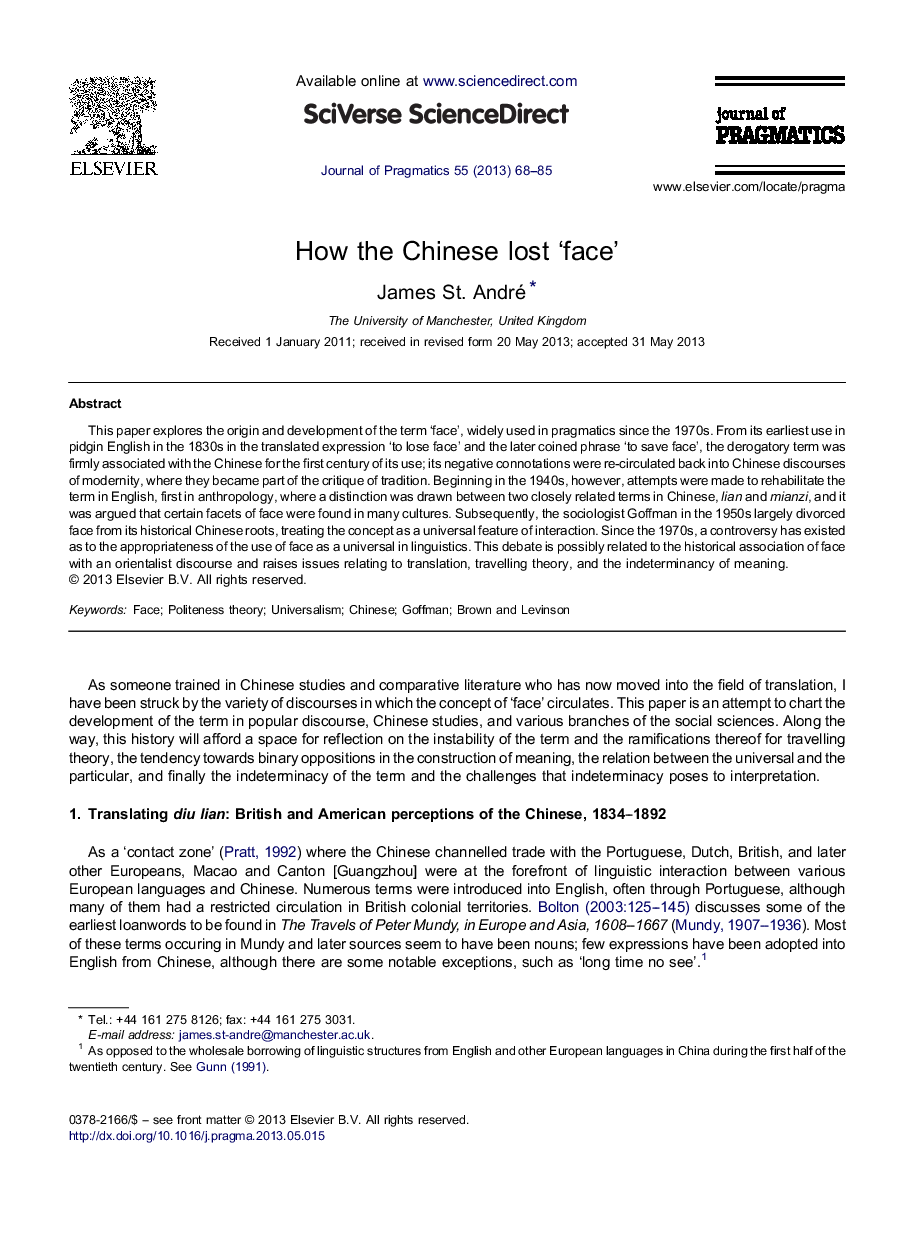| کد مقاله | کد نشریه | سال انتشار | مقاله انگلیسی | نسخه تمام متن |
|---|---|---|---|---|
| 7298130 | 1474744 | 2013 | 18 صفحه PDF | دانلود رایگان |
عنوان انگلیسی مقاله ISI
How the Chinese lost 'face'
ترجمه فارسی عنوان
چگونه چین چهره را از دست داد
دانلود مقاله + سفارش ترجمه
دانلود مقاله ISI انگلیسی
رایگان برای ایرانیان
کلمات کلیدی
صورت، نظریه ارتداد جهانی شدن، چینی ها، گافمن، براون و لوینسون،
موضوعات مرتبط
علوم انسانی و اجتماعی
علوم انسانی و هنر
زبان و زبان شناسی
چکیده انگلیسی
This paper explores the origin and development of the term 'face', widely used in pragmatics since the 1970s. From its earliest use in pidgin English in the 1830s in the translated expression 'to lose face' and the later coined phrase 'to save face', the derogatory term was firmly associated with the Chinese for the first century of its use; its negative connotations were re-circulated back into Chinese discourses of modernity, where they became part of the critique of tradition. Beginning in the 1940s, however, attempts were made to rehabilitate the term in English, first in anthropology, where a distinction was drawn between two closely related terms in Chinese, lian and mianzi, and it was argued that certain facets of face were found in many cultures. Subsequently, the sociologist Goffman in the 1950s largely divorced face from its historical Chinese roots, treating the concept as a universal feature of interaction. Since the 1970s, a controversy has existed as to the appropriateness of the use of face as a universal in linguistics. This debate is possibly related to the historical association of face with an orientalist discourse and raises issues relating to translation, travelling theory, and the indeterminancy of meaning.
ناشر
Database: Elsevier - ScienceDirect (ساینس دایرکت)
Journal: Journal of Pragmatics - Volume 55, September 2013, Pages 68-85
Journal: Journal of Pragmatics - Volume 55, September 2013, Pages 68-85
نویسندگان
James St. André,
